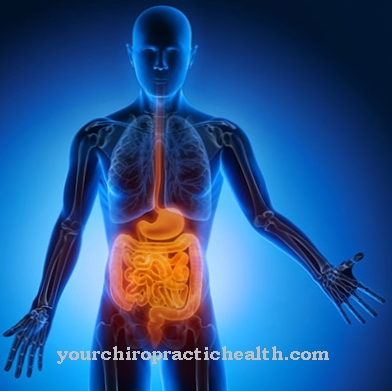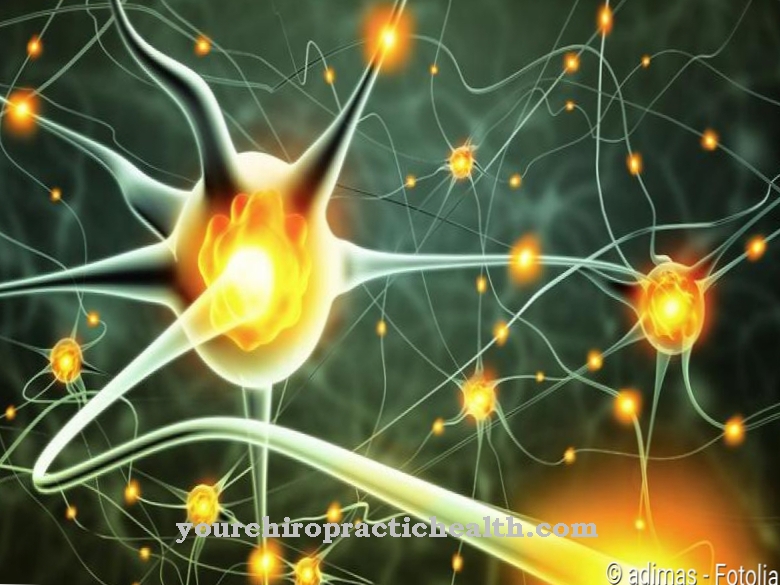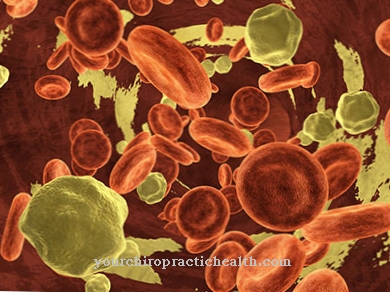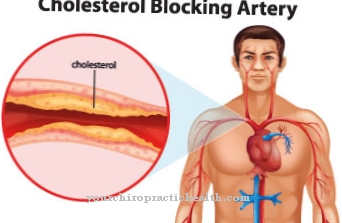With a so-called Collagenosis it is a special autoimmune disease. In the context of an autoimmune disease, the body's own tissue is viewed by the human body's immune system as a so-called foreign body.
What is collagen disease?

© ajr_images– stock.adobe.com
A Collagenosis is viewed by leading medical professionals as a serious connective tissue disease. Since several organs can be affected at the same time as part of a collagenosis, different clinical pictures can arise in the further course of the disease.
Among other things, the so-called antiphospholipid syndrome is based on collagenosis. In this case, the immune system's defense against the body's own tissue leads to increased blood clotting.
In addition to the antiphospholipid syndrome, the so-called Sjogren's syndrome is also mentioned as a typical clinical picture. In Sjogren's syndrome, those affected primarily complain of painful and burning mucous membranes. The area around the eyes is particularly often affected.
causes
So far, the causes for a Collagenosis cannot be fully determined. However, leading medical professionals see a strong connection between the occurrence of collagenosis and the hereditary factors in those affected.
Since women in particular are particularly often affected by collagenosis, in addition to the hereditary factors, the hormonal balance of the human body is the focus of doctors. In addition to the factors already mentioned, a particularly high level of psychological stress can also trigger collagenosis.
Extreme exposure to sunlight is also seen as another potential cause of collagenosis. A viral disease is only seen as a cause of collagenosis in very few cases. The diagnosis of collagenosis usually requires a long stay in a clinic.
Symptoms, ailments & signs
Collagenosis initially causes typical general symptoms such as fever and weight loss. Body temperature often remains elevated over a longer period of time, but rarely rises above 38.5 degrees Celsius. Nevertheless, the fever leads to a feeling of illness. In addition to these general symptoms, there are various syndromes such as Sjögren's syndrome or antiphospholipid syndrome, which in turn are associated with various symptoms and complaints.
In general, the so-called sicca symptoms develop, with dry eyes and mouth, and vaginal dryness in women. The main symptom of collagenosis is Raynaud's phenomenon. The fingers turn blue and swell before they become red and finally die. Associated with this are abnormal sensations, pain and paralysis.
The symptoms can affect the bones and joints as well, depending on the type and severity of the autoimmune disease. In severe cases, eczema and erythema also develop on the hands and feet, which are occasionally accompanied by pain and abnormal sensations. If systemic lupus erythematosus develops as part of collagenosis, skin changes on the face also appear. In addition, cysts form in the area of the palate, and the skin becomes sensitive to the sun.
Diagnosis & course
As part of a comprehensive diagnosis, taking a blood sample is always the main focus. If during the examination of the blood in a laboratory a first suspicion of a Collagenosis further investigations must be considered.
So-called imaging methods are used for better diagnostics. For example, a first suspicion can be substantiated by means of an X-ray of the chest. The x-ray should always be taken in two planes. Thus, by positioning the radiation source behind the thorax and positioning the radiation source next to the thorax, optimal results can be achieved.
Another imaging method used is an examination of the lungs using ultrasound. As part of this examination, the heart is also subjected to an extensive assessment. If, for example, there is an abnormality in the area of the lungs, in most cases the implementation of a lung function diagnosis is considered. If the nervous system is already affected by collagenosis, an assessment by a neurologist must be undertaken.
Complications
Collagenosis is a relatively serious disease. This extremely restricts the quality of life and everyday life of the person affected. In most cases this leads to complaints in various organs and also in the nervous system. The exact course of the disease depends on the organs affected, so that a general prediction is not possible in most cases.
A transplant may be necessary so that the person concerned can continue to survive. Paralysis and various sensory disorders can also occur throughout the body, which make everyday life difficult. Not infrequently, those affected also suffer from severe pain, which can lead to irritability and psychological complaints. There are usually no particular problems or complications in the treatment of collagenosis.
However, a positive course of the disease cannot be guaranteed in every case. The treatment itself is carried out with the help of medication and can limit the donors. Some people also suffer from so-called phantom pain, which also leads to a reduction in quality of life. As a rule, life expectancy is not reduced by collagenosis.
When should you go to the doctor?
If symptoms such as a dry mouth or joint pain are noticed, there may be a serious condition that needs to be investigated. Medical advice is necessary if the symptoms and complaints increase or have not subsided after a week at the latest. Should further health problems arise, such as persistent tiredness or water retention in the hands, it is best to consult your family doctor immediately. Affected people should have the mentioned complaints clarified quickly so that a possible collagenosis can be detected at an early stage.
If the illness causes severe pain or even psychological problems, the sick person must immediately inform the doctor who, if necessary, can initiate further therapy and consult a psychologist. Women in particular are affected by collagenosis. People who are under stress or who have hormonal disorders also belong to the risk groups and should inform their family doctor about unusual symptoms. In addition to the general practitioner, an internist can be consulted. The individual complaints are to be treated by different specialists. In the late stages, the disease requires hospital treatment.
Treatment & Therapy
To alleviate the individual symptoms, a therapy tailored to the patient is essential. In terms of choosing an appropriate therapy method, it is essential to work on one Collagenosis to name the organs involved.
Patients suffering from collagenosis, for example without involvement of organs, should primarily be treated symptomatically. In consultation with the attending physicians, drug therapy is usually started.
In addition, regular monitoring by a doctor is recommended as part of this form of therapy. If individual organs were attacked as part of the disease, immunosuppressive treatment should be carried out.
As part of an immunosuppressive treatment, individual processes of the immune system are suppressed. The defense of the immune system is thus switched off. Cortisone is therefore often used at the beginning of therapy.
You can find your medication here
➔ Medicines for rash & eczemaOutlook & forecast
Collagenosis is an autoimmune, inflammatory soft tissue rheumatism. The various forms of collagenosis have a good prognosis, but are not curable. A life with this autoimmune disease leads the patient permanently through sections of different, local inflammations, pain and complaints but also through relatively pain-free times. These are also known as the active and inactive phases of the disease. The severity of the pain symptoms varies. There may be mild, moderate to severe pain, which is characterized by time relapses.
The aim with regard to the existing prognosis for collagenoses is to treat the pain symptoms in such a way that a largely symptom-free life is possible for the patient. The use of pain medication and anti-inflammatory drugs is therefore individually tailored to the patient and the specific symptoms by the doctor.
Patients with collagenosis have to undergo regular medical check-ups throughout their lives in order to identify and prevent consequential damage and changes in health due to various sources of inflammation in good time. In the case of intense attacks with severe pain symptoms or organic impairments, the doctor should also be consulted. The pain medication may then be adapted to the temporary episode.
prevention
Since the causes of a Collagenosis have not been clearly identified to date, no specific recommendation for prevention can be given. Thus, only the symptoms associated with the disease can be alleviated. If there is no therapy for the individual symptoms, so-called phantom pain can occur. The so-called phantom pain always lead to permanent symptoms, although the underlying disease has already been cured.
Aftercare
In the case of collagenosis, the person affected usually has very few or even no special follow-up options, as this disease usually cannot be completely cured. However, since self-healing cannot occur, the person affected with collagenosis should consult a doctor at the first signs and symptoms of the disease in order to prevent the occurrence of further complications or further worsening of the symptoms.
An early diagnosis usually has a very positive effect on the further course of the disease. Most patients with this disease rely on medication to protect the internal organs from the discomfort and to avoid other complications. The doctor's instructions should always be followed, and questions or side effects should always be discussed with the doctor first.
Patients with collagenosis should also protect themselves particularly well against infections or other diseases, since the immune system is significantly weakened. The help and care of the person affected by one's own family can also be very helpful with this disease and prevent possible psychological complaints.
You can do that yourself
Since the cause of the collagenosis has not been adequately researched, no comprehensive self-help measures can be given. The disease represents a serious interference in the lifestyle of the person affected. It is therefore particularly important to ensure a stable psyche. Positive thinking is helpful in everyday dealing with the disease. Various activities to improve wellbeing should be targeted. Variety and life-affirming leisure activities are recommended.
A reliable social environment is beneficial in coping with daily challenges. Therefore, contacts should be cultivated and withdrawal behavior should be avoided. A healthy lifestyle is beneficial. This includes a balanced diet rich in vitamins and adequate exercise. The physical activities are to be adapted to the current possibilities. Excessive demands should generally be avoided. Do not consume alcohol, drugs or medication that has not been discussed with your doctor. Optimal sleep hygiene is necessary for a restful sleep. The conditions should therefore be checked and adapted to the individual requirements.
For many people affected, an exchange with other sick people is very helpful and perceived as pleasant. An exchange with other people can be cultivated in self-help groups or in forums. Discussions based on trust are held and mutual assistance is given.






.jpg)







.jpg)













